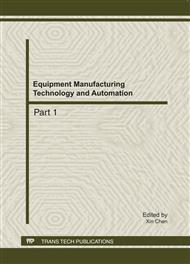p.1211
p.1215
p.1219
p.1223
p.1228
p.1232
p.1237
p.1241
p.1245
Study on Neural Network Control Strategy of Electric Vehicle in-Wheel Motor
Abstract:
The brushless direct current motor(DC) simulation model based on neural network control strategy is developed, according to the physical structure of the motor, after the analysis of in-wheel motor mathematical model. The simulation has pulse width modulation (PWM) generation module,which can adjust the PWM duty cycle to regulate the motor speed. Simulation results show that there is good agreement between the output ofsimulation model and the theoretical analysis.The application of neural networkcontrol in brushless DC motor offers the advantages of rapid response, without overshoot ,and higher steady-state accuracy.
Info:
Periodical:
Pages:
1228-1231
Citation:
Online since:
August 2011
Authors:
Price:
Сopyright:
© 2011 Trans Tech Publications Ltd. All Rights Reserved
Share:
Citation:


